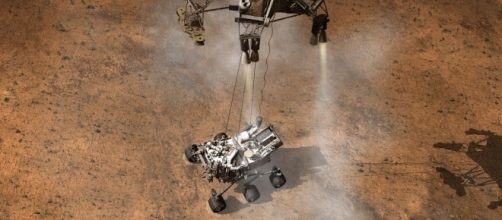NASA has been penetration Mars with the Curiosity Rover since August 6, 2012. Over the past years, the Mars mission has turned out to be more successful. Recently, the space giants have discovered boron on the planet's surface. Boron is a chemical element that is very interesting to study for Astrobiologists.
With the help of the Curiosity Rover that is designed to investigate the Gale Crater on Mars, NASA has taken their mission one step forward. The Curiosity Rover has been collecting images and data on Mars as evidence for scientists. With the recent data, scientists will be able to come to a better understanding on the red planet.
Is this another sign of life on Mars?
Astronomers have been working all day and night to study and understand the surface of Mars and the planet on the whole. With their past achievements, they seem to be getting closer to finding what they need. Boron is an element that is present on Earth, and the discovery of that on Mars is a huge milestone. There are chances for this to be another sign of life.
Boron is an element that stabilizes the Sugary Molecule Ribose, and the Ribose is present in all living cells. It is an essential element that drives the metabolic processes. That said, the finding of Boron On Mars will be taken into further consideration for research.
More evidence of life on Mars
The Gale Crater on Mars has a 96-mile-wide radius, and with the help of the Curiosity Rover, NASA scientists are able to go further deep inside.
Researchers have discovered that the veins in the crater were formed due to groundwater. Those waters were ancient which might have existed millions of years ago.
The discovery of boron and ancient water shows the possibility that life could have once existed on the red planet. A researcher named Patrick Gasda from the Los Alamos National Laboratory in New Mexico stated that the discovery shows that Mars once had organics present.
According to Space, based on the recent finding scientists determine that Borates on the Gale Crater is 3.8 billion years old. These elements are the building blocks in making RNA, and without RNA there is no life. Researchers believe that there might have been life on ancient Mars which was independent to Earth.
It is still not the end of NASA's Mars mission as the Curiosity Rover continues to explore the Martian surface. With more time left, it is believed that scientists will soon be able to determine possibilities of life on Mars.


